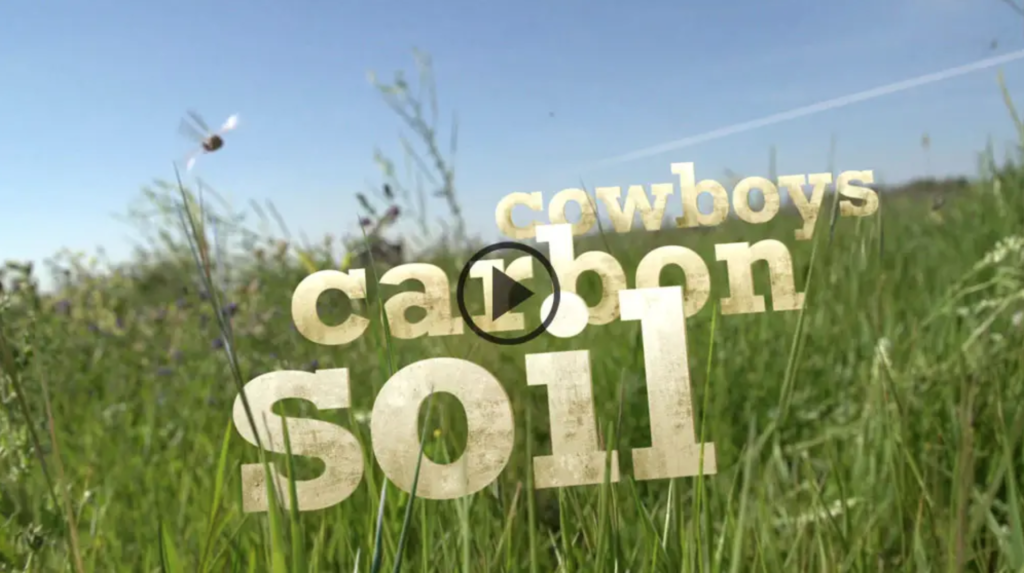Herd Impact

Husband and wife ranchers Emry Birdwell and Deborah Clark have been going against the grain of North Texas ranching for decades – hiding their ability to raise many, many more cattle per acre than any of their neighbors.
Soil Carbon Cowboys

This short film by Peter Byck follows producers who have taken the leap from conventional to regenerative agriculture.
Less Stress, More Grass by Managing Holistically

Organic dairy farm, Dharma Lea, experienced economic, social and ecological benefits when making the switch from rotational grazing to Holistic Planned Grazing.
Livestock Rejuvenates Ecosystem

Elias Ncube, an accredited Holistic Management educator at the Africa Centre for Holistic Management (ACHM) in Zimbabwe, offers his perspective on how Holistic Planned Grazing is helping local smallholder farmers.
777 Buffalo Ranch – South Dakota (2014)

This 2013 case study follows Mimi Hillenbrand of the 28,000-acre 777 Bison Ranch in South Dakota, USA. Among other impressive results, over 20 years bare ground has decreased significantly from 34% to under 10%, there are virtually no signs of erosion, and low production grasses are being replaced by deep-rooted native species like Green Needlegrass and native herbs such as Echinacea.
Fox Ranch – Colorado

The Colorado Chapter of The Nature Conservancy (the Conservancy) and the Savory Institute (SI) agreed in 2011 to work together to advance the joint strategic interest and desire to enable enhanced conservation, restore ecological functions, and safeguard biological diversity of the seasonally dry grasslands of the world through the use of Holistic Management.
Africa Centre for Holistic Management Zimbabwean Savanna Case Study

This 2012 case study follows the Africa Centre for Holistic Management in Victoria Falls, Zimbabwe. Between 2001 and 2009, ecologoical monitoring demonstrated a 31% decrease in bare ground, 56% increase in litter cover, 12% increase in perennial grass plants, 21% decrease in less desirable annual grasses, and 17% decrease in soil movement.
Twodot Land and Livestock – Pushing Limits on the Northern Plains

Fourth generation Montanan rancher and second generation Holistic Management practitioner continues to push the envelope while simultaneous increasing profits, cultural well being, and ecological resiliency. While still doing holistic grazing planning, in 2006, Zach pastured a fairly conventional four herds—three groups of yearlings (750 head, 440 head, and 500 head), plus a herd of 400 cows. In 2007, Jones invested in water development in order to combine all the yearlings into one big herd of 1,550 head. This herd was on Zachary’s 12,000 acres all summer (mid-May to mid-September), as well as a year round herd of 500 cows.
Prosperity through Simplicity – The Coughlans of Tarabah

Michael and Anna Coughlin, who manage the 18,000-hectare Tarabah on the plains of southwestern New South Wales, are “among the world’s greatest harvesters of sunlight” according to Howell. The Coughlins also manage the 2,400-hectare Moonbrill property a few hours to the east in a more productive environment… all with just 2.5 full-time employees and close to 6,000 cattle. Despite large tracts of Australia’s perennials reverting to cool season annuals, the Coughlins have created the conditions for pernnials to re-establish, and in doing so the wildlife (including duck-billed platypus and echidnas) has become more abundant.
Resiliency Down Under Drought-Proofing in New South Wales

In 2006-2007, southern Australia faced historic drought conditions, with the Coughlin family’s Tarabeh property receiving 8 of the 17-inch average, and Moombril receiving 10.5 of the normal 30. They survived the drought with more cattle than they started and without buying a pound of hay. This case study details the conditions they faced and the tough decisions that were made to make it through.
